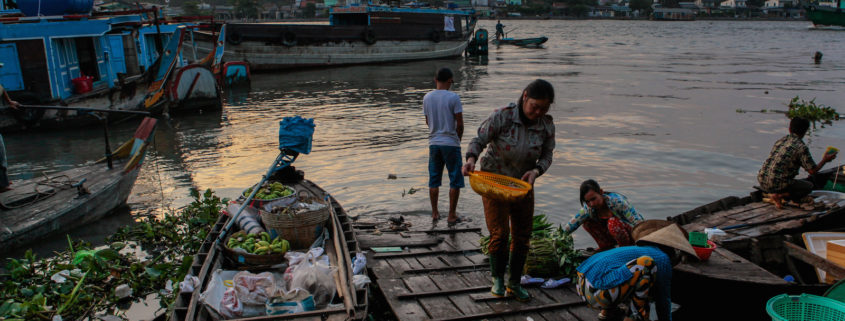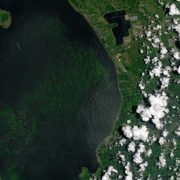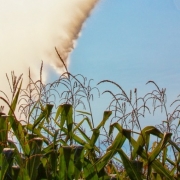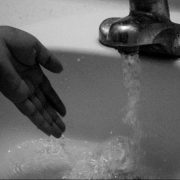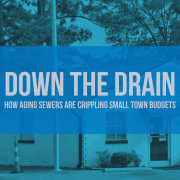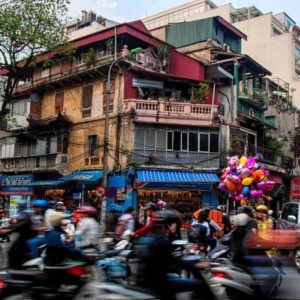Vietnam’s Tourism and Fishing Industries Drown in Waste
Plastic pollution, largely from Asia, chokes the world’s oceans.
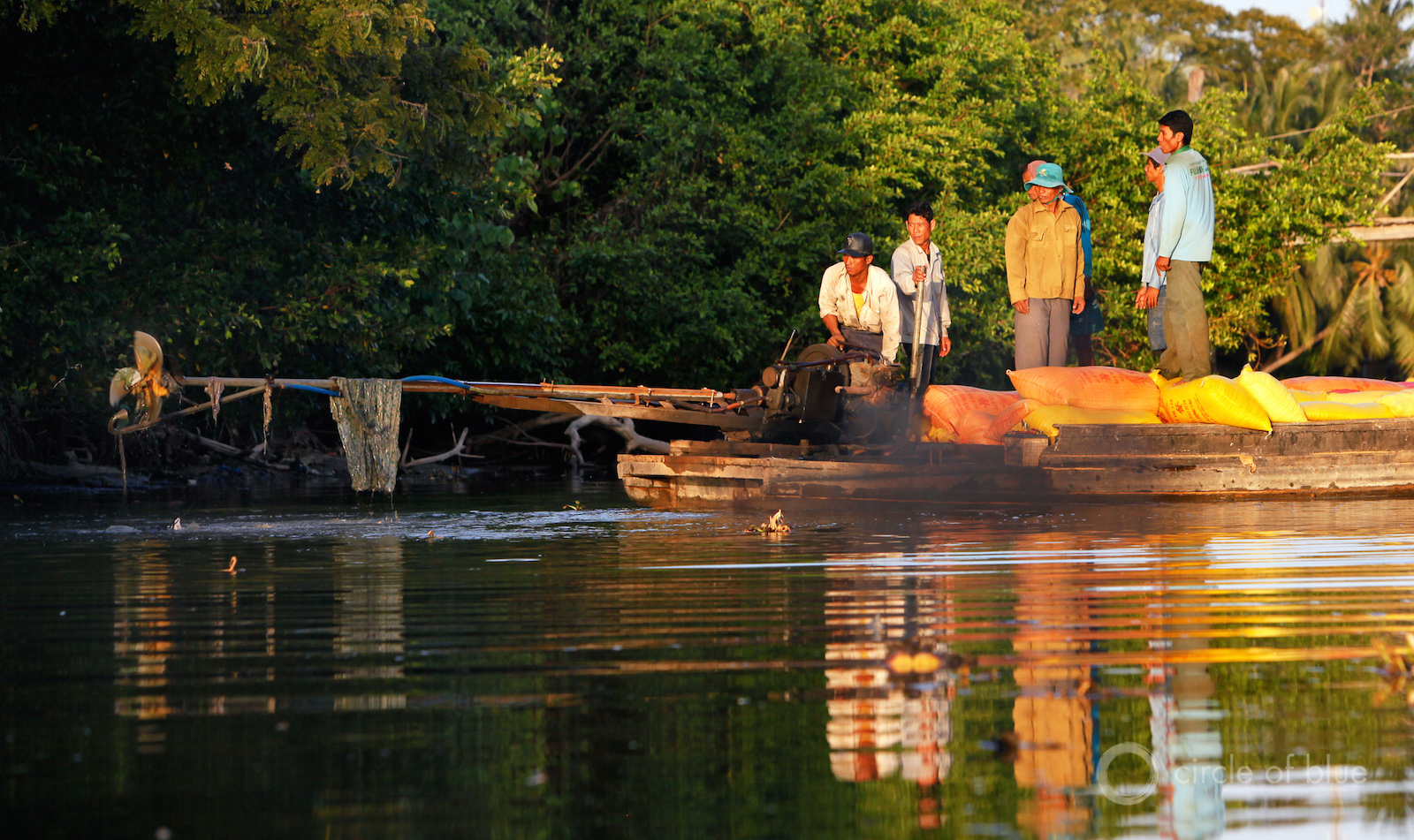
A mat of plastic garbage fouls a boat propeller in the Mekong River Delta near Can Tho, Vietnam. Some 60 percent of the plastic that enters the world’s oceans originates from just five countries: China, Indonesia, the Philippines, Thailand, and Vietnam. J. Carl Ganter/Circle of Blue
Jennifer Möller-Gulland, Circle of Blue
MUI NE, Vietnam — An afternoon swim in the South China Sea along the southeast coast of Vietnam is not the pleasant experience a visitor might expect. Amid rainbow-colored fishing boats, plastics, of all sizes and forms, bob in emerald waters.
Hotel resort beaches are cleaned meticulously, but it is an endless task. The sea is full of plastics and other solid wastes, which are increasingly showing up in fishing nets. “We pull out more and more plastic when fishing,” a local fisherwoman said, highlighting that marine debris is taking the place of a catch already decimated by overfishing.
Plastic waste fouls tourism jewels across Vietnam’s coast: the UNESCO heritage site of Ha Long Bay, the beaches of Nha Trang and Mui Ne, as well as the southern Phu Quoc Island. Popular travel guides Trip Advisor and Lonely Planet have acknowledged the issue, noting that there is “garbage over garbage” in Mui Ne and that “rubbish blights Vietnam’s popular Phu Quoc Island.”
Vietnam’s coastal waters are not outliers. Globally, at least eight million metric tons of plastic leak into the ocean every year, a number that is projected to increase to 15 million metric tons by 2025. If the projection comes to pass, the ocean could contain one ton of plastic for every three tons of finfish, according to Ocean Conservancy calculations. Research published online July 19 in the journal Science Advances, estimates that three-fifths of all plastic ever produced now sits in landfills, oceans, rivers, forests, or other corners of nature.
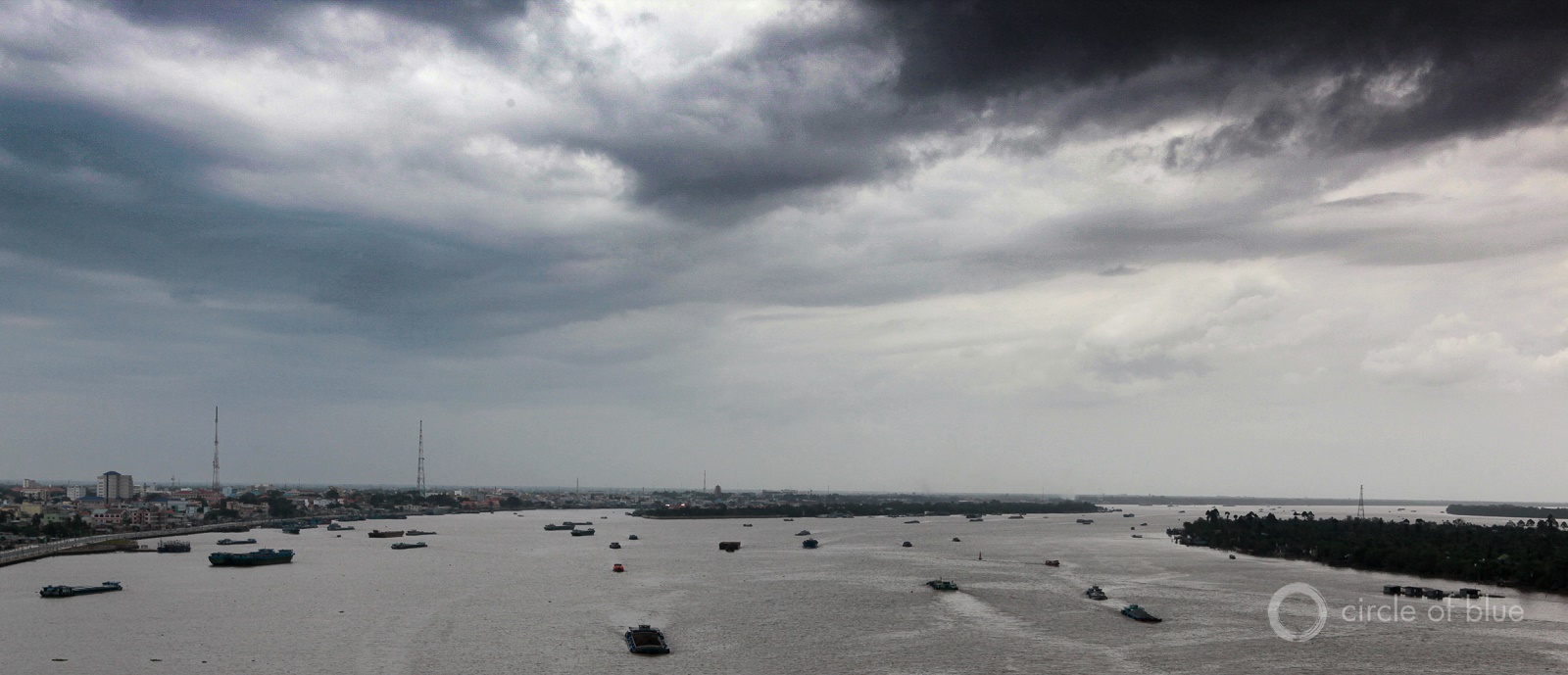
Clouds darken the sky off of Vietnam’s southern coast, in the Mekong delta. Photo © J. Carl Ganter / Circle of Blue
Waste gets washed onto Vietnam’s shores in bulk. In February 2017 alone, 200 tons of solid waste, including tar and hazardous waste, were washed ashore in Central Vietnam’s Quang Nam Province, close to the tourist city of Hoi An, according to local news reports. So much waste littered the sand in Mui Ne in June 2016 that locals, expats, and tourists joined forces to clean the beaches.
The scale of environmental and economic challenges resulting from the solid waste problem have not gone unnoticed by the Vietnamese government, which has developed a waste management strategy. The strategy sets a target of 100 percent solid waste collection from urban areas and industries by 2025, and 90 percent from rural areas. There are also plans for solid waste recycling plants.
Not all of the beach waste, transported by sea currents, is produced domestically. A recent report by Ocean Conservancy and McKinsey found that 60 percent of the plastic that enters the world’s seas originates from just five countries: China, Indonesia, the Philippines, Thailand — and Vietnam.
Most of the plastic-leakage into the oceans, some 80 percent, originates on land and is carried by rivers. A portion of that waste comes from poorly constructed dump sites. That is the case in Vietnam. According to Germany’s International Development Cooperation (GIZ), there are 458 operating landfills in Vietnam, but only one in six can be considered sanitary. The remainder do not have systems to collect and treat leachate, the “juice” that drains from landfills and pollutes soil and water. Reliable municipal solid waste collection rates are difficult to track down, but they are estimated to be 85 percent in urban areas in 2015 but below 20 percent for rural areas and the urban poor in 2004.
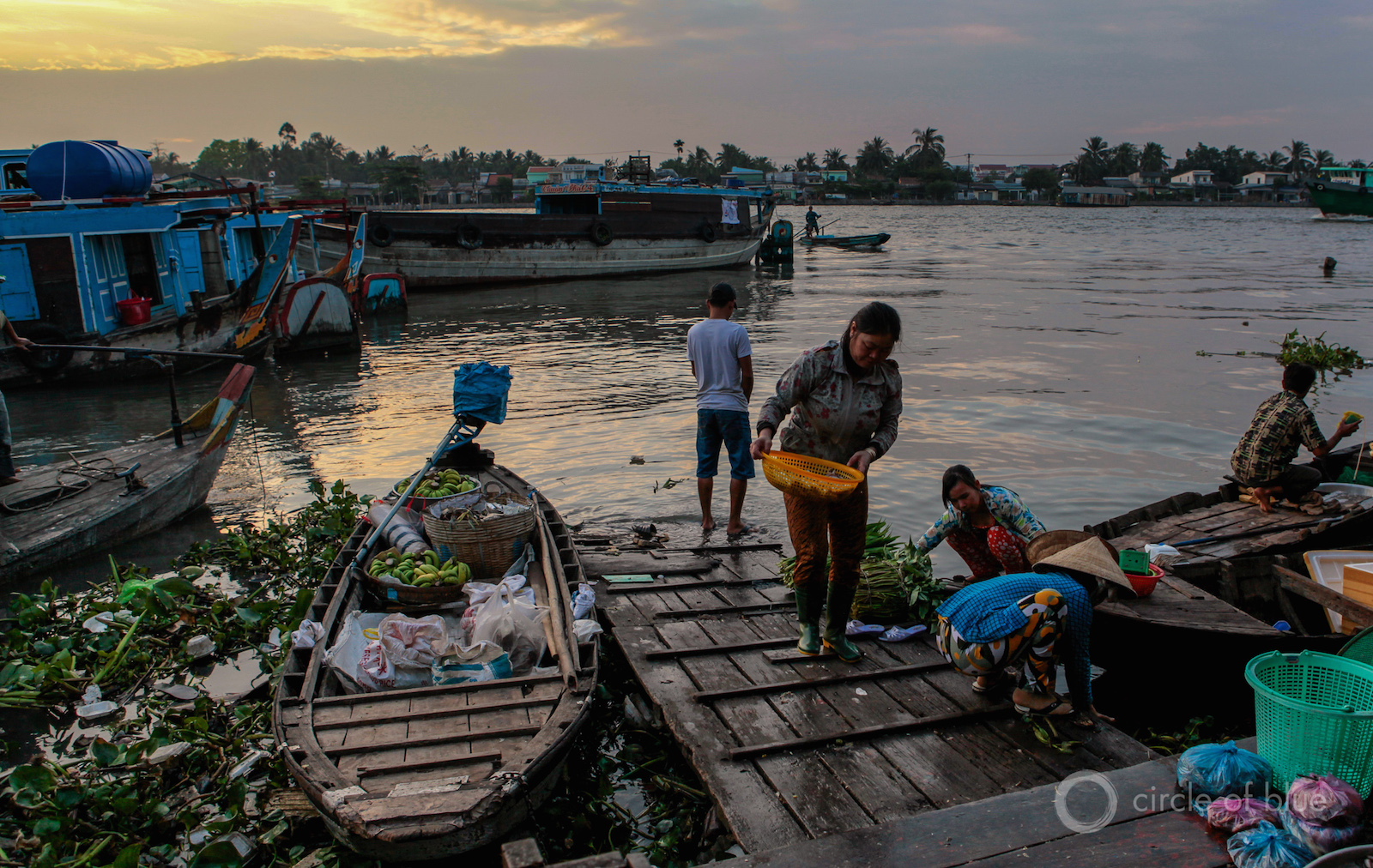
Vietnam’s rivers are key pathways for global ocean’s plastic waste. J. Carl Ganter/Circle of Blue
With formal recycling systems mostly absent, the economics of plastic collection for waste pickers reflect the overall composition of waste in the oceans. The daily salary for waste pickers collecting plastic bags is only $US 0.05 while those that gather bottles and other PET plastics is $US 3.70. Thus, three-fifths of the plastic leakage consists of low value plastics, such as plastic bags, while only one-fifth consists of high-value plastics, such as PET.
What can be done? Ocean Conservancy found that, contrary to common perception, recycling is no solution as about 80 percent of plastics have too low a value. Bans on plastic bags, meanwhile, are only effective in heavily regulated locations.
Instead, leakage points in the collection system, such as illegal dumping or unsanitary dump sites near waterways, need to be closed; waste collection rates need to be increased; technologies to treat waste, such as waste-to-fuel and waste-to-energy, need to be introduced; and low-value plastic waste needs to be converted into refuse-derived-fuel.
In Vietnam, observers hope that the government strategy and market drivers will be sufficient to reduce waste and allow fishing boats to pull out more fish than plastic.

